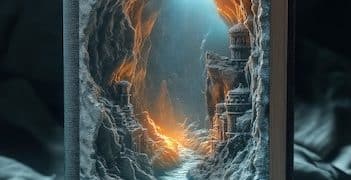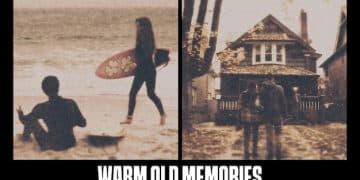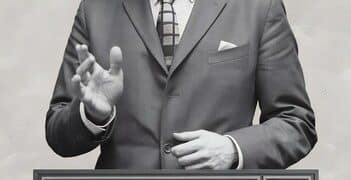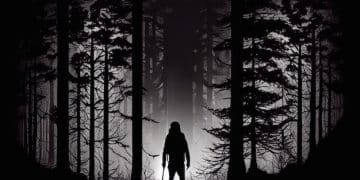From Book to Screen: The Best and Worst Movie Adaptations
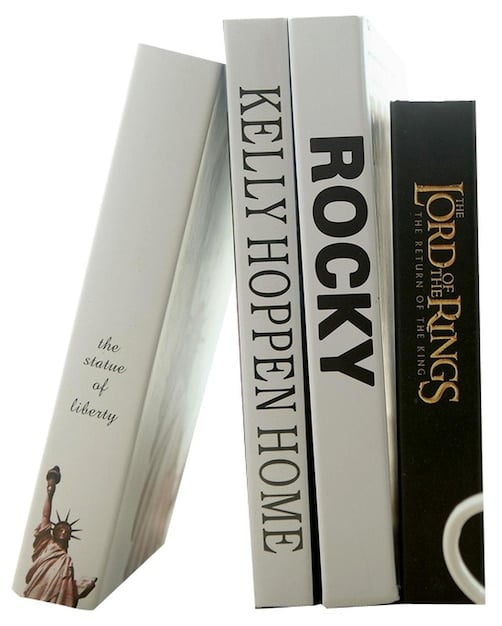
From Book to Screen: 3 Adaptations That Nailed It (and 2 That Missed the Mark) explores the delicate balance between literary source material and cinematic interpretation, highlighting successes like “The Lord of the Rings” and failures such as “The Dark Tower,” offering insights into what makes an adaptation resonate or fall flat.
The allure of seeing a beloved book come to life on the big screen is undeniable. However, the journey from page to cinema is fraught with challenges, and not all adaptations manage to capture the essence of the source material. Let’s delve into **From Book to Screen: 3 Adaptations That Nailed It (and 2 That Missed the Mark)**, examining what makes some adaptations soar while others stumble.
The Art of Adaptation: A Delicate Balance
Adapting a book into a film is a complex undertaking. It requires a delicate balance between staying true to the source material and making necessary changes to suit the cinematic medium.
Successful adaptations often understand the core themes and characters of the book, translating them effectively to the screen. Failures, on the other hand, may deviate too far from the source material, losing the essence that made the book so beloved.
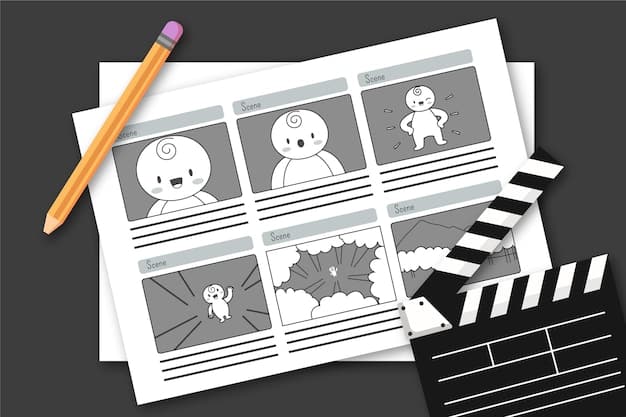
Staying True to the Core
One of the key elements of a successful adaptation is staying true to the core of the story. This doesn’t necessarily mean a word-for-word recreation, but rather a faithful representation of the themes, characters, and overall tone.
Adaptations that understand what made the book special in the first place are more likely to resonate with fans.
Necessary Changes for Cinema
While fidelity to the source material is important, some changes are often necessary to make a book work as a film. This could include streamlining the plot, condensing timelines, or altering character arcs for dramatic effect.
The key is to make these changes in a way that enhances the story rather than detracts from it.
- Understand the core themes of the book.
- Make changes that enhance the story.
- Stay true to the characters’ personalities and motivations.
- Capture the overall tone and atmosphere of the book.
Ultimately, a successful adaptation walks the line between honoring the source material and creating a compelling cinematic experience. It’s a difficult balancing act, but when done well, the results can be truly magical.
Adaptation Success: The Lord of the Rings
Peter Jackson’s adaptation of J.R.R. Tolkien’s “The Lord of the Rings” is widely considered to be one of the most successful book-to-screen adaptations of all time. It captured the epic scope, rich detail, and emotional depth of Tolkien’s masterpiece, bringing Middle-earth to life in a way that thrilled fans and critics alike.
The films were praised for their stunning visuals, faithful casting, and commitment to the source material’s themes of good versus evil, friendship, and sacrifice.
Faithful Casting and Performances
The casting choices for “The Lord of the Rings” were crucial to its success. Actors like Elijah Wood, Ian McKellen, and Viggo Mortensen perfectly embodied their respective characters, bringing them to life with nuance and conviction.
Their performances helped to connect audiences with the story on an emotional level.
Visual Spectacle and World-Building
The visual effects and production design in “The Lord of the Rings” were groundbreaking for their time. Jackson and his team meticulously recreated Tolkien’s world, from the Shire’s idyllic landscapes to the dark and foreboding Mordor.
This attention to detail helped to immerse viewers in Middle-earth and made the story feel all the more real.
- Stunning visual effects and production design.
- Faithful casting and powerful performances.
- Commitment to the source material’s themes.
- Epic scope and attention to detail.
“The Lord of the Rings” stands as a benchmark for how to adapt a complex and beloved book into a successful film franchise. By staying true to the core of the story while embracing the possibilities of the cinematic medium, Jackson created a truly unforgettable experience.
Adaptation Success: Harry Potter and the Sorcerer’s Stone
The first film in the Harry Potter series, “Harry Potter and the Sorcerer’s Stone,” is another example of a successful book-to-screen adaptation. It captured the magic, wonder, and heart of J.K. Rowling’s beloved novel, introducing a new generation to the world of Hogwarts and its inhabitants.
The film was praised for its faithful adaptation of the book’s plot, its charming performances from a young cast, and its whimsical visuals.
Capturing the Magic of Hogwarts
One of the key challenges in adapting “Harry Potter and the Sorcerer’s Stone” was to bring the magical world of Hogwarts to life in a believable way. The filmmakers succeeded in creating a visually stunning and enchanting environment that captured the imagination of viewers.
From the Great Hall to the Quidditch pitch, every aspect of Hogwarts felt authentic and true to the book’s descriptions.
Introducing a Young Cast
The casting of Daniel Radcliffe, Rupert Grint, and Emma Watson as Harry, Ron, and Hermione, respectively, was a stroke of genius. These young actors perfectly embodied their characters and grew with them throughout the series.
Their performances helped to make the story relatable and engaging for audiences of all ages.

- Faithful adaptation of the book’s plot.
- Charming performances from a young cast.
- Whimsical and enchanting visuals.
- Successful introduction to the wizarding world.
“Harry Potter and the Sorcerer’s Stone” set the standard for the rest of the film series. By staying true to the spirit of the book and creating a visually appealing world, the filmmakers created a beloved adaptation that continues to delight fans of all ages.
Adaptation Success: To All the Boys I’ve Loved Before
Netflix’s adaptation of Jenny Han’s “To All the Boys I’ve Loved Before” is a modern example of a successful young adult book adaptation. It captured the charm, humor, and romance of the novel, introducing a new generation to the story of Lara Jean Covey and her love letters.
The film was praised for its diverse casting, its relatable characters, and its lighthearted tone.
Modernizing a Beloved Story
The filmmakers behind “To All the Boys I’ve Loved Before” understood the importance of modernizing the story for a contemporary audience. They updated the setting, the dialogue, and the characters to reflect the realities of modern teenage life.
This helped to make the story more relatable and engaging for young viewers.
Diverse Casting and Representation
The casting of Lana Condor as Lara Jean was a significant step forward for representation in young adult films. Condor, who is of Vietnamese descent, brought a fresh and authentic perspective to the role.
The film also featured a diverse supporting cast, reflecting the diversity of modern high schools.
- Charming performances and relatable characters.
- Modernized story for a contemporary audience.
- Diverse casting and representation.
- Successful capture of the book’s humor and romance.
“To All the Boys I’ve Loved Before” demonstrated that a successful adaptation can not only stay true to the spirit of the book but also update it for a new generation. By embracing diversity, modernizing the story, and staying true to the characters, the filmmakers created a beloved adaptation that resonated with audiences worldwide.
Adaptation Failure: The Dark Tower
Stephen King’s “The Dark Tower” series is a sprawling and complex epic that has captivated readers for decades. However, the 2017 film adaptation was widely considered to be a failure. It failed to capture the scope, the themes, and the characters of King’s masterpiece, resulting in a disappointing and unsatisfying experience for fans.
The film was criticized for its short runtime, its simplified plot, and its deviation from the source material. It tried to cram too much into too little time, resulting in a rushed and incoherent story.
Deviating from the Source Material
One of the biggest criticisms of “The Dark Tower” was its deviation from the source material. The filmmakers made significant changes to the plot, the characters, and the overall tone of the story.
These changes alienated fans of the books and made the film feel like a watered-down version of King’s epic.
Missing the Scope and Complexity
“The Dark Tower” series is known for its complex world-building, its intricate mythology, and its philosophical themes. The film adaptation failed to capture any of this complexity, reducing the story to a simple action movie.
This left viewers feeling unsatisfied and unfulfilled.
- Deviation from the source material.
- Failure to capture the scope and complexity of the book.
- Simplified plot and rushed pacing.
- Disappointing experience for fans.
“The Dark Tower” serves as a cautionary tale for filmmakers attempting to adapt complex and beloved books. By deviating too far from the source material and failing to capture the essence of the story, the filmmakers created a disappointing adaptation that failed to resonate with fans.
Adaptation Failure: Eragon
Christopher Paolini’s “Eragon” was a young adult fantasy novel that gained a huge following upon its release. However, the 2006 film adaptation was widely panned by critics and fans alike. It failed to capture the magic, wonder, and adventure of the book, resulting in a forgettable and uninspired film.
The film was criticized for its poor CGI, its wooden performances, and its generic plot.
Poor CGI and Visual Effects
One of the biggest problems with “Eragon” was its lackluster CGI and visual effects. The dragon Saphira, who is a central character in the book, looked unrealistic and unconvincing on screen.
This detracted from the film’s overall sense of immersion and made it difficult for viewers to connect with the story.
Wooden Performances and Lack of Chemistry
The performances in “Eragon” were also a major letdown. The actors seemed uninterested and uninspired, and there was little to no chemistry between them.
This made it difficult for viewers to care about the characters or their fates.
- Poor CGI and visual effects.
- Wooden performances and lack of chemistry.
- Generic plot and uninspired direction.
- Failure to capture the magic and wonder of the book.
“Eragon” is a prime example of how a poorly executed adaptation can ruin a beloved book. By failing to invest in quality CGI, casting uninspired actors, and simplifying the plot, the filmmakers created a film that was both disappointing and forgettable.
| Key Point | Brief Description |
|---|---|
| 👍 Successful Adaptations | Capture the essence and themes of the original book. |
| 👎 Failed Adaptations | Deviate too much from the source material and disappoint fans. |
| 🎭 Casting | Faithful casting is crucial for bringing characters to life effectively. |
| 🎬 Visuals | Stunning visuals and world-building enhance the adaptation’s experience. |
Frequently Asked Questions
▼
A successful book adaptation typically stays true to the original source material’s core themes and character arcs. It balances faithfulness with necessary cinematic changes to enhance the storytelling.
▼
Adaptations often fail when they deviate too much from the book’s plot, characters, or tone. Poor casting, inadequate special effects, and a lack of understanding of the source material also contribute.
▼
While rare, some adaptations enhance the original story through visual mediums, compelling performances, or streamlined narratives. These adaptations offer a unique, enjoyable experience beyond the source material.
▼
Casting is crucial. Actors who embody the characters’ traits, motivations, and physical appearances enhance audience engagement and improve the adaptation’s overall reception and faithfulness.
▼
Visual fidelity significantly aids bringing the book’s world to life. When the visuals align with the reader’s imagination, they enhance immersion, creating a believable and engaging cinematic experience.
Conclusion
The journey from book to screen is a challenging one, filled with potential pitfalls and opportunities for greatness. While some adaptations manage to capture the magic and wonder of the original source material, others fall short, disappointing fans and critics alike. By understanding the delicate balance between fidelity and adaptation, filmmakers can increase their chances of creating successful and memorable book-to-screen experiences.

